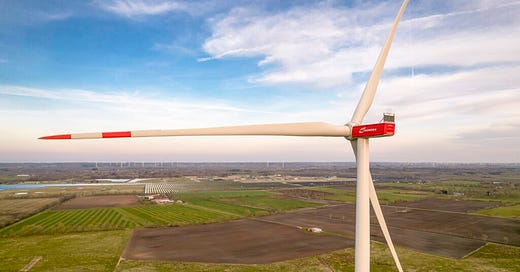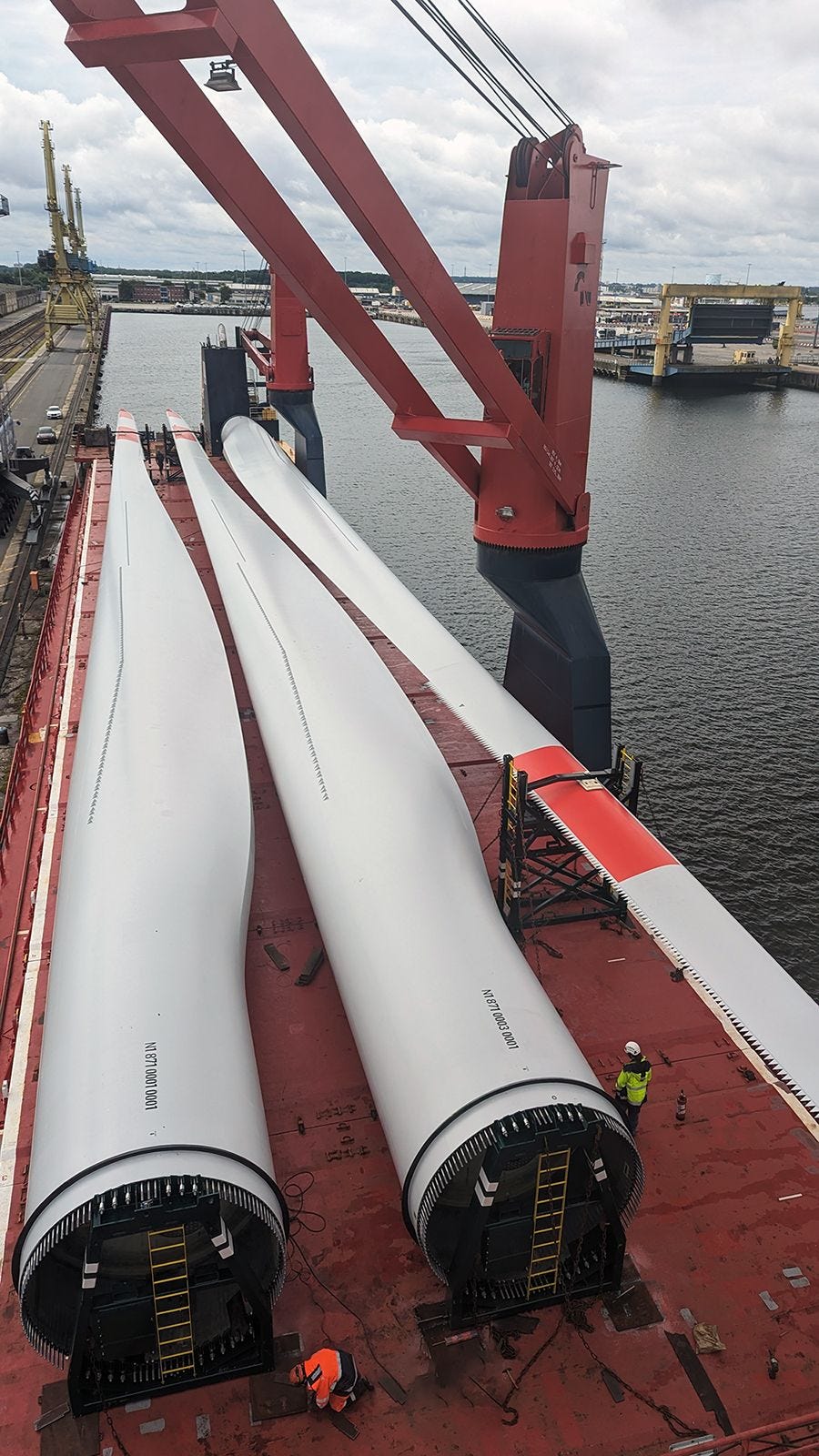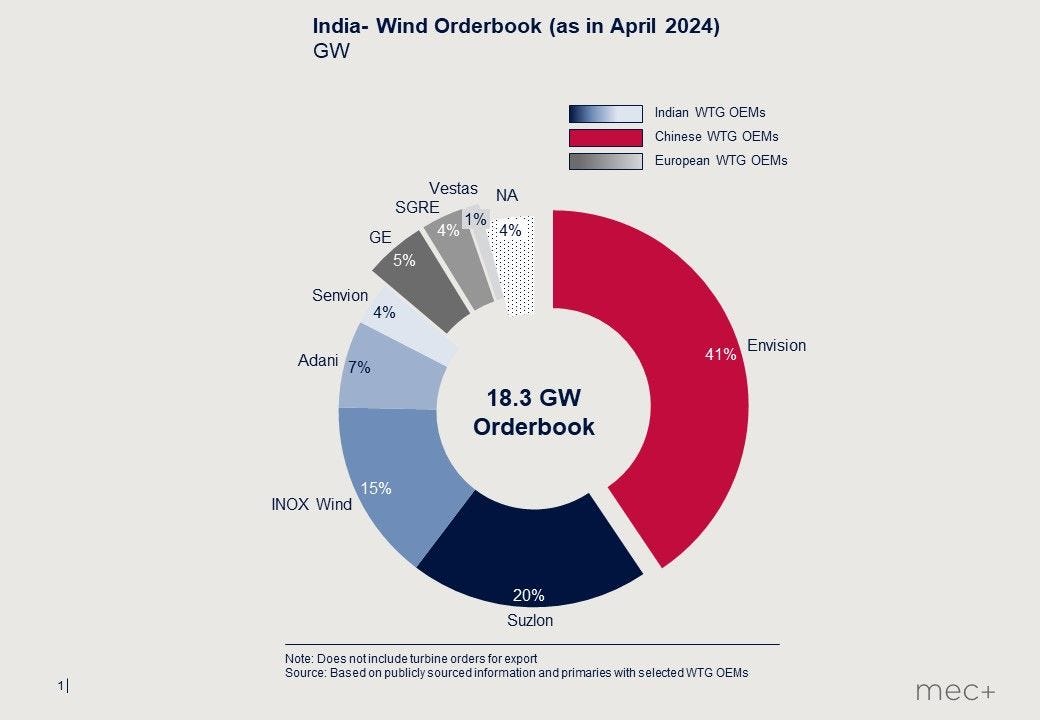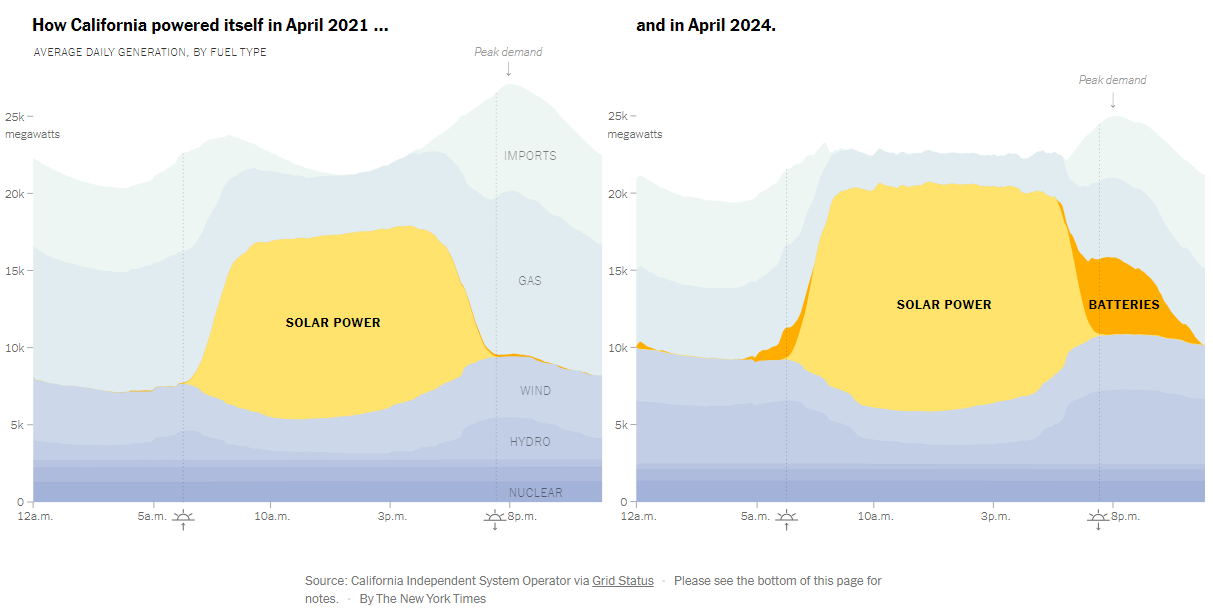Windletter #81 - When a tornado destroys your wind farm
Also: the world's lowest PPAs, 1 GW of Enercon in Spain, the repowering figures of Acciona's wind farms, and more.
Hello everyone and welcome to a new issue of Windletter. I'm Sergio Fernández Munguía (@Sergio_FerMun) and here we discuss the latest news in the wind power sector from a different perspective. If you enjoy the newsletter and are not subscribed, you can do so here.
Windletter is sponsored by:
🔹 Tetrace. Specialized services in operation and maintenance, engineering, supervision, inspection, technical assistance, and distribution of spare parts in the wind sector. More information here.
🔹 RenerCycle. Development and commercialization of solutions and specialized services in the circular economy for renewable energies, including comprehensive dismantling of wind farms and waste management, refurbishment and sale of components and wind turbines, management and recycling of blades and others. More information here.
Windletter está disponible en español aquí
The most read from the latest edition has been: the GE video at their Schenectady factory, the LCA report of the Vestas V236-15.0, the results of the floating wind auction in France.
Last week was quite intense on a personal and professional level, so it was completely impossible to release an edition, but we're back this week with strength. I also have a couple of guest articles in the works, so subscribe if you don't want to miss them.
That said, let's get to this week's news.
When a tornado destroys your wind farm
The news of the week is undoubtedly the shocking images that have reached us from Iowa, United States, and have gone around the world.
Storm chaser Reed Timmer has published several videos on his YouTube channel showing a brutal tornado passing through a wind farm.
The tornado, which according to the comments on the YouTube video is something unprecedented, literally destroys several wind turbines as it passes through the wind farm, making them collapse as if they were made of paper.
There are three videos on his channel (video 1, video 2, video 3) where you can see the tornado up close. I also leave you links to the exact moments of some of the highlights of the videos, if they can be called like that (collapse 1, collapse 2).
The victim of this tornado is the Orient wind farm, which has an installed capacity of 500.8 MW with Vestas V110-2.0 and V120-2.2 wind turbines across all its phases. Its owner is MidAmerican Energy, one of the major IPPs in the United States. According to their statements to the press, this tornado "has had an unprecedented impact on their fleet," considering they have been operating wind farms since 2004.
According to some articles in the American press, several of the wind turbines at the park recorded winds of more than 160 kilometers per hour (44 m/s) before collapsing. But possibly, the speeds were even higher.
Honestly, this topic escapes me quite a bit from a technical point of view, beyond being literally left speechless after watching the video.
What can be observed from the images is that some of the wind turbines do not seem to have gone into feathering position (blades at ≈90º) while the tornado was nearby, which could favor the collapse (although it might have happened anyway).
And what solutions are there against such tornadoes?
On one hand, we know that there are wind turbines known as "Typhoon proof" or "T-class" certified for extreme wind events (for example, they are commonly sold in markets like Japan). But of course, design conditions of a certification are one thing, and reality, where chance and randomness play a significant role, can exceed the turbine's design limits (at least those on paper).
On the other hand, some of you may know about the GUYS system (Gamesa Uninterruptable Yaw System), a system that allows the nacelle to be oriented even in the absence of an electrical grid (a blackout during a tornado, for example), so that the wind turbine remains in a favorable position to avoid extreme loads. But it doesn't seem like such a system would have helped much in this case, as the wind turbines seem to be grid-connected. I suppose other OEMs have similar solutions.
In this link, you can see some photos of the disaster's aftermath.
A big thanks to Daniel Artal for the explanations.
_
Saudi Arabia signs one of the cheapest wind PPAs in the world
The state-owned Saudi Power Procurement Company will purchase electricity from two planned wind farms in Saudi Arabia (Al Ghat with 600 MW and Wa'ad Al Shamal with 500 MW) through what are supposed to be the world's cheapest wind PPAs. At least, this is claimed by Prince Abdulaziz bin Salman Al Saud, Saudi Arabia's Minister of Energy.
The announced prices are exceptionally low:
Al Ghat at $15.65/MWh
Wa'ad Al Shamal at $17.01/MWh
The truth is, these are extremely low prices, although I don't think the profitability and financing cost criteria are even comparable to those we see in the West. It would also be interesting to know the equivalent hours of the wind farms.
In any case, not everyone agrees that these are the cheapest PPAs in the world, as Philip Totaro has pointed out in this LinkedIn comment, citing some PPAs in the United States.
The Japanese company Marubeni will be responsible for constructing both wind farms.
_
Enercon celebrates the milestone of 1 GW installed in Spain
In an event held in Las Palmas de Gran Canaria, Enercon celebrated the milestone of 1 GW of installed capacity in Spain.
And why in the Canary Islands? Well, basically because it has always been Enercon's stronghold in Spain. In fact, Enercon's market share in the islands amounts to 66% of the 645 MW installed.
We have to go back to 1991 to find the first wind turbine installed by Enercon in the Canary Islands. It was in Tenerife, 6 years after the company's founding, and it was an E-32, when Enercon still equipped gearboxes in their turbines. Interestingly, we recently talked in Windletter about what will probably be the last E-32.
It wasn't until 1994 that the first direct drive units arrived on the islands (specifically in Tenerife): two units of the E-40 model.
Until the end of 2023, Enercon has installed 1,000 MW and 593 wind turbines of different models in Spain, from the E-32 in 1991 to the most recent one installed in Gran Canaria: the E-147. Worldwide, Enercon has more than 60 GW installed.
To celebrate this milestone, Enercon has prepared a video with images of some of its most iconic wind farms in Spain.
_
Acciona will repower several wind farms located in Tahivilla
Little by little, new repowering projects are arriving in the Spanish wind farm fleet. A sector that will see quite a bit of movement in the coming years after the ministry (through IDAE) granted a package of aid.
Among the winners of these grants, Acciona Energía has been one of the first to publicly announce its repowering project. It concerns the Tahivilla Wind Farms (Río Almodóvar, El Gallego, La Manga, El Ruedo, and Cortijo de Iruelas) located in Cadiz, near Tarifa. One of the areas in the peninsula with the best wind resource.
The figures are quite impressive:
The wind farms will transition from being composed of 98 wind turbines (MADE AE-5X of 800 kW) to 13 Nordex turbines (N163 and N175 in 5.X and 6.X versions).
Some turbines will reach a nominal power of 7 MW. Unless someone beats them to it, they would be the most powerful installed in Spain.
Some turbines will be the N175 model, which again, unless someone beats them to it, will have the largest rotors installed in Spain.
The installed capacity will increase from 78.4 MW to 84.4 MW, while the evacuation capacity will remain the same. This suggests that evacuation infrastructure will be reused as much as possible.
Once repowered, the parks' production will increase by 72%. A spectacular figure.
The tower heights of the N163 will be 159 and 148 meters, probably due to site suitability issues (depending on the location, low towers can pose a problem with turbulence). I believe the 159 meter tower will be the tallest in Spain once installed. For the N175, I couldn't find the data.
The Tahivilla repowering project has received €8.3 million from the circular repowering program.
Coincidence or not, if I'm not mistaken, one of the wind turbines will not need to be dismantled, as it is the unit that collapsed a couple of months ago, and the video went viral.
The figures of this repowering project are perfectly understood at a glance thanks to the infographic published by Kiko Maza on his LinkedIn account.
For the curious ones, here are links to two of the projects presented to the administration (in Spanish):
_
Nordex advances in the installation of the N175-6.X prototype
One of the things I like most about LinkedIn is that sometimes you can find interesting posts that hardly have any impact, but that allow you to learn about news, details, and interesting curiosities of the industry, as well as the progress of projects and the development of new innovations and products.
This time, the little gem I found is a post about the blades of the Nordex N175/6.X prototype.
The blades, named NR87.5 and already manufactured, are heading towards the location where the first prototype of this model will be erected, if I'm not mistaken, in Germany.
_
Siemens Gamesa puts its business in India up for sale
This sale would be part of Siemens Gamesa's strategy to focus on the European and American markets. Additionally, it would serve to raise funds and address the significant losses announced in recent years.
SGRE's business in India is estimated to be valued at around €1 billion according to several reports. It is unclear which part would be included in the transaction, as SGRE's operations in India cover the entire value chain: development, factories, engineering centers, O&M...
Among the potential buyers are Adani Renewable Energy, Brookfield Energy Transition Funds, Macquarie, Masdar, and TPG Rise. Adani could be one of the best-positioned buyers, as it would be a perfect purchase to consolidate its wind business as a manufacturer (which, let's remember, is relatively new).
Siemens Gamesa (formerly Gamesa) established itself in India in 2009 and has since been one of the market leaders, with 9 GW of cumulative installed capacity.
However, if we look at the distribution of the order backlog for the Indian market, the landscape has changed significantly compared to a few years ago. Envision has a dominant position (just recently celebrating the milestone of 1 GW installed in the country), followed by local players Suzlon, Inox Wind, Adani, and Senvion (which only has business in India currently). As you can see, Western OEMs have fallen behind.
As if that weren't enough, in parallel, Siemens Gamesa has also launched a workforce adjustment plan affecting approximately 4,000 people worldwide (out of a total of around 26,000 employees).
_
Batteries are changing California's electrical system
Indeed, this news isn't about the wind sector, but I believe it's worth mentioning here to understand what lies ahead in the coming years for the Spanish electrical system and much of the world's systems.
Batteries (and solar energy, of course) are radically altering the electricity generation curve. And California is probably one of the places most advanced in this transformation.
This is clearly seen in the following graph comparing electricity generation in April 2021 and April 2024.
It's worth reading the full report in the New York Times.
Thank you very much for reading Windletter and many thanks to Tetrace and RenerCycle, our main sponsors, for making it possible. If you liked it:
Give it a ❤️
Share it on WhatsApp with this link
And if you feel like it, recommend Windletter to help me grow 🚀
See you next time!
Disclaimer: The opinions presented in Windletter are mine and do not necessarily reflect the views of my employer.









